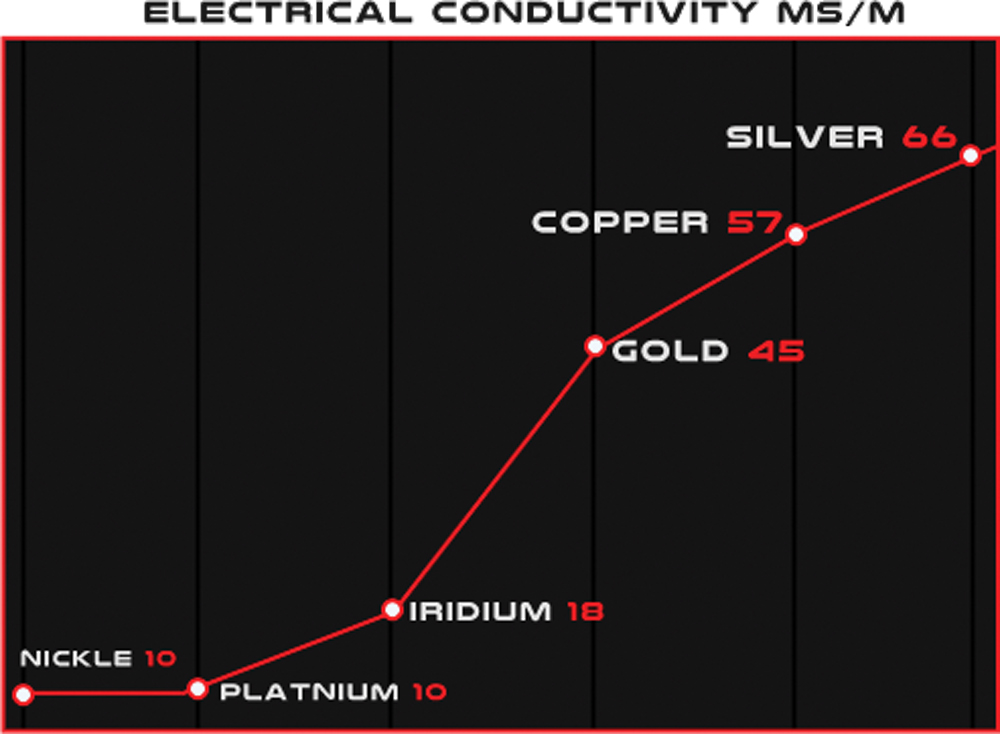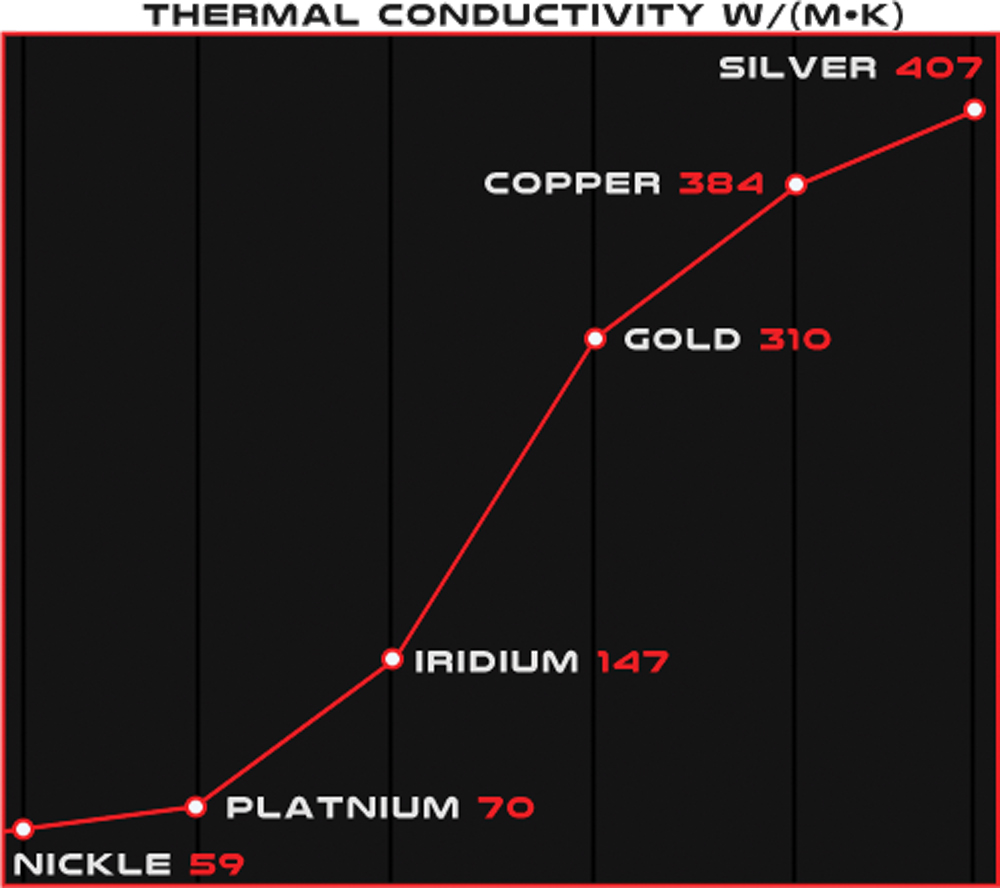Tech Update: Selecting The Right Spark Plugs

It’s well worth the effort to understand what different material, design, gap, and heat range options are available and ideal for your combination.
Spark plugs are some of the most debated performance parts around. And like many parts in the performance world, I’ve found that choosing the right spark plug can vary substantially. It usually comes down to the user committing to following a learning and testing process to get it right.
To be candid, this is part of what separates the winners from the rest in many races, because the winner somehow has just a few more horsepower than the rest; or their engine lasts longer.
It’s not magic, and there isn’t one miraculous spark plug brand or material that’s superior to all the rest across the board. Rather, the solution often comes by way of knowledge and some experimentation.
The process to end up with the best spark plugs that we recommend has a few steps, but it is worth the effort. Before we get to testing, though, it’s important to understand a few key points about their designs that differ from plug to plug.
Heat range: This is often dictated by the build of the engine, meaning that your build may require a colder or hotter plug than the factory specified. The heat range will dictate how fast the plug tip will dissipate heat from combustion. According to Brisk Racing and Performance Spark Plugs, a change of just one heat range impacts the tip temperature by between 75 and 100 degrees Celsius. With heat ranges, your goal is to keep the spark plug in the “self-cleaning zone.” This is the middle range of temperature—below the “self-ignition zone” (too hot, causing harmful self-ignition of fuels) and hot enough to stay above the “deposit zone,” which happens when a plug is too cold and then subsequently fouls because it is not hot enough to remain clean.


Gap: A known plug gap for your combination (typically .025–.060 inches depending on your application and build) is where we like to begin. Forced induction typically is on the lower side of that range (to prevent spark “blowout”) and naturally aspirated is typically middle or on the higher side of the range.
Material: Many choices are available—here are a few of the more popular ones.
- Copper: The traditional racers’ choice, with excellent thermal and electrical conductivity (second only to silver) but a shorter lifespan (typically 20,000 miles). Often the choice for forced induction and racers who don’t mind changing plugs frequently, and typically the least expensive. Copper does an excellent job of conducting heat away from where it shouldn’t be and accepting electrical energy to fire the charge.
- Platinum: A less popular design for racers, this is often the choice for applications with long intervals between changing plugs. OEMs choose this material for up to 100,000 miles between changes. Platinum has one of the worst electrical conductivity and thermal conductivity ratings, making it hard to ignite and hard to dissipate heat.
- Iridium: A more popular design for racers with longer intervals between changing plugs (for those with hard-to-reach plugs, for example). This is also a popular choice because iridium is much harder and stronger than platinum yet is also better at accepting electrical conductivity and dissipating heat than platinum, but not as good as copper or silver.
- Silver: Silver is the most expensive (typically) but also one of the most electrically conductive and thermally conductive plug materials available. Surpassing even copper, this metal very easily accepts energy to fire the charge and dissipates the heat away; in short, it’s a great material to consider. High boost and hard-to-ignite fuels are an excellent application for this plug material.

Design: The overall design of the plug and electrode is a hotly debated topic. Spending time reading about what plugs people have successfully used on your application will save countless hours in this area—because there’s a huge variety of plug designs to choose from. Single-spark, multi-spark, continual-360-degree designs, and more.
Testing and Tuning Process
The goal is to find out what heat range, what gap, and what material work best for your engine combination. You do this through engine tuning using your favorite tuning software (or carb).
Picking a set of spark plugs to start with: We recommend starting with a common copper spark plug from your favorite brand and setting the plugs with a known gap that works for your build. Forced induction is typically on the lower side of the gap range (the aforementioned .025–.060 inches) while naturally aspirated is typically on the middle or higher side.
Tuning process: Chassis or dyno tuning is preferred, as we can accurately judge performance gains and watch for knock retard in a controlled environment to find the maximum safe performance, noting what our key indicators are telling us. These include:
- Boost—If equipped, how much will it tolerate before knocking?
- Spark advance—How much will it tolerate before knocking, and did we reach maximum power before we found knock? The right plugs will allow the best spark tolerance before knock will occur on the fuel you are using.
- Air/fuel ratio or Lambda—Did the engine prefer a much richer mix to quench knock? If so, is the plug too hot?
These key indicators will drive which way you go with spark plug heat range, gap, and material selection. For example, testing a colder plug may be indicated if you cannot reach a high enough spark advance before encountering knock on the fuel you intend to use. Conversely, trying a hotter plug may be indicated if you can run more spark advance than the engine needs to make maximum power before encountering knock. The ideal spark plug will help you reach maximum power before encountering knock retard.
We answer these questions by monitoring the data from the scanner of your favorite tuning software. In fact, we often teach this as a founding principle of how to become a good tuner; you must know what the engine is telling you through the scanner to make smart decisions. Repeat this process to find the best spark plugs for your engine.
Bob Morreale is president and founder of The Tuning School. He also serves on the SEMA ETTN (Emerging Trends and Technology Network) Select Committee, and enjoys road racing, drag racing, and developing new tuning technologies and processes.
 MEMBERSHIP LOGIN
MEMBERSHIP LOGIN JOIN PRI
JOIN PRI


